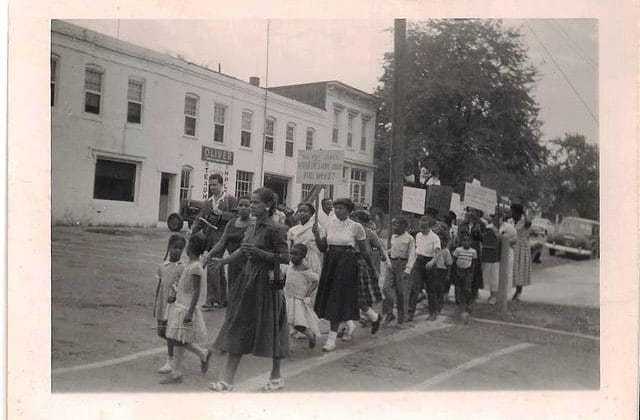
By Sarah Allen



1954.
It was the year that marked the first mass usage of the Salk vaccine against polio; the year in which the CBS morning show first premiered; and the year that President Dwight Eisenhower added the phrase “under God” to the Pledge of Allegiance.
But, also among the many noteworthy moments of that tumultuous period in time, was the historic Brown v. Board of Education Supreme Court decision, which declared segregation in schools illegal.
The effects of that decision were many and varied, but one small town in Ohio would ultimately play a major role in the fallout of that landmark decision.
At the Highland House Museum in Hillsboro, the twists and turns of the case Clemons v. Board of Education of Hillsboro, Ohio, will be featured in a new permanent exhibit. It is set to open June 3.
Kati Burwinkle, project director of the exhibit, said, “I can’t tell you how proud and excited we are to bring this … to the museum.”
It will include a 10-minute documentary featuring interviews of people whose lives were intertwined with the case.
“It will tell the story, but in their voices,” Burwinkle said.
She described the film as an oral history, stressing it as a key component of not only the exhibit, but also the Highland County Historical Society’s goal of archiving local history.
The exhibit will also include photographs and a display case of memorabilia.
The museum will also be hosting a travelling exhibit highlighting the Brown v. Board of Education case. This exhibit is from the Brown Foundation and is sponsored by the Highland County Bar Association.
And, Burwinkle added, Highland County District Library Director Jennifer West will also fill a display featuring the many books in which the Hillsboro case has been discussed.
“(The case) made a difference to people way outside of Highland County,” she added.
During June, the exhibit’s “kick-off month,” there will also be other events at the museum, Burwinkle said. In all, this exhibit has been “well over a year” in the making.
And while it may highlight a turbulent time period in both local and national history, the message is ultimately about “how everyday people can change history,” Burwinkle said.
She recounted the story, saying that, in 1954, the Hillsboro Junior and High schools had been integrated; however, the elementary schools remained segregated. At that time, the African American students attended Lincoln Elementary and the white students attended the Webster school.
Following the Brown v. Board of Education decision, however, a group of mothers tried to enroll their students at Webster. They were denied.
The mothers of those children, however, “decided they weren’t going to accept that ruling,” Burwinkle said, adding that, also noteworthy, is the fact that the demonstrations that followed were “all done by women.”
The mothers gathered with their kids, and every day, for two years, would walk to the Webster school, where they would be turned away.
Burwinkle said while there was harassment, the situation never became violent.
The Hillsboro case extended far beyond the rural community in which it began. Burwinkle said that it was covered in TIME magazine and that it also “(came) on (the NAACP’s) radar.”
Thurgood Marshall, who would become the first African-American justice on the United States Supreme Court, sent his “right-hand person” to Hillsboro, Burwinkle added.
Eventually, the case ended with the integration of Webster school.
Burwinkle said that once the African-American students were enrolled, many were surprised at the differences between their school and Webster. As an example, she said some students had never seen a map, as the textbooks they had used were old and had pages torn out.
Ultimately, though, “everybody’s experience was different,” Burwinkle said. The stories of integration ranged from “wonderful” to “gut-wrenching.”
And those stories will now be a part of the Highland House Museum for all future generations to hear.
“It’s an important story,” Burwinkle said.
THE HIGHLAND HOUSE MUSEUM
151 E. Main St., Hillsboro, OH 45133
937-393-3392
facebook.com/HiCoHistSoc
ID, 'source', true); $sourcelink = get_post_meta($post->ID, 'sourcelink', true); $sourcestring = '' . __('SOURCE','gabfire') . ''; if ($sourcelink != '') { echo "
$sourcestring: $source
"; } elseif ($source != '') { echo "$sourcestring: $source
"; } // Display pagination $args = array( 'before' => '' . __('Pages:','gabfire'), 'after' => '
', 'link_before' => '', 'link_after' => '', 'next_or_number' => 'number', 'nextpagelink' => __('Next page', 'gabfire'), 'previouspagelink' => __('Previous page', 'gabfire'), 'pagelink' => '%', 'echo' => 1 ); wp_link_pages($args); // Display edit post link to site admin edit_post_link(__('Edit','gabfire'),'','
'); // Post Widget gab_dynamic_sidebar('PostWidget'); ?>